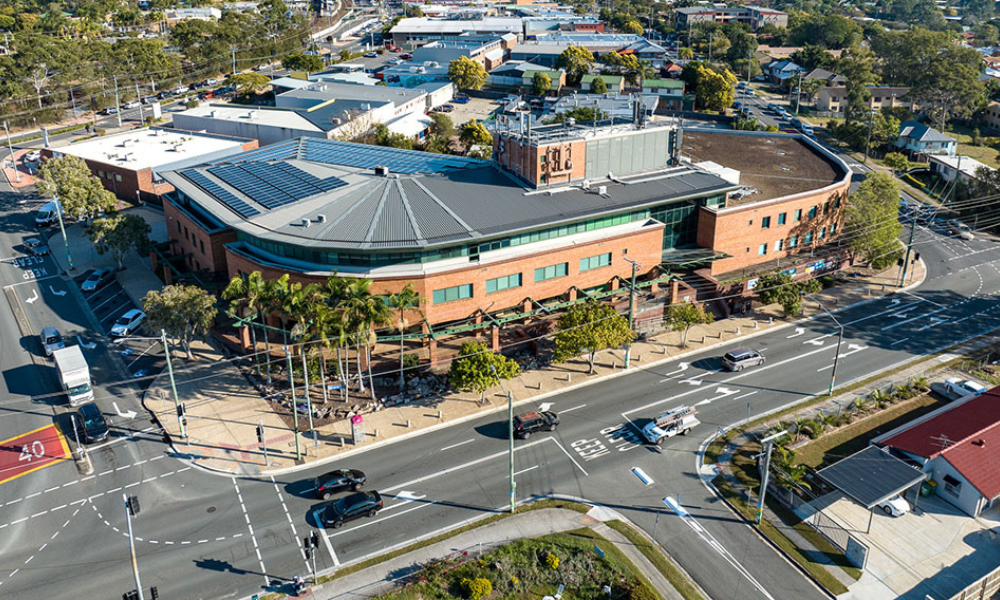Retrofitting initiatives breathes new life into old office buildings

Australia is taking strides to reduce its commercial real estate sector’s carbon footprint, not only through new constructions but also by retrofitting older buildings to meet modern energy efficiency standards.
The sector is responsible for approximately 10% of the nation’s total greenhouse gas emissions, primarily due to energy consumption. A collective initiative to enhance the energy efficiency of office spaces from the sector could play a significant role in enabling the nation to achieve its climate objectives.
One notable example is the Patella Group’s recent project (pictured above) in Logan Central, Brisbane. Over three years, the Queensland-based developer transformed a mid-1980s office building into a model of energy efficiency. The renovations included the installation of new lifts, solar panels, a switch to air-cooled systems from water-cooled ventilation, and LED lighting.
“The building went from being a very high consumption asset as far as utilities and maintenance go, with poor energy efficiency, to being even more efficient and fine-tuned than many of our new buildings in the portfolio,” said San Patella, the group’s facilities manager.
He highlighted the addition of a building management system which serves as the building’s operational “brain”, optimising energy use and enhancing performance. Innovations like carbon monoxide sensors and thermostats in the underground car park have also been implemented to maintain consistent air quality efficiently.
These changes significantly improved the building’s NABERS energy rating, elevating it from 0.5 to 5.5 stars, with 6 stars being the highest possible. The NABERS rating is crucial as commercial tenants, including government agencies, increasingly demand high sustainability standards, often ruling out offices with ratings below 4.5 stars.
This shift towards sustainability is gaining momentum across Australia, driven by tenant and investor demands for greener buildings. Westpac Group, as part of its commitment to the global Net Zero Banking Alliance, announced a target to reduce its financed emissions in the office building sector by 59% per square meter by 2030 from a 2022 baseline. This initiative supports clients in developing emission reduction plans and financing renewable energy projects.

“Adopting a circular economy approach and revitalising ageing assets presents owners with new opportunities to unlock the value of their buildings,” said Heather Bolt (pictured right), ESG property sector lead in Westpac Group’s business and wealth division.
“As the Patella Group has demonstrated, retrofitting existing buildings may reduce operating costs, increase tenant demand, and enhance long-term resilience.”
Westpac and BankSA have also partnered with Kambitsis Group for the retrofit of two office buildings in Adelaide, aiming for completion in 2024. These buildings are expected to be fully electric, featuring a high-performance façade and energy-efficient air conditioning systems.
For Patella, while the immediate goal is to design efficient and safe buildings, the broader impact of these initiatives contributes positively to environmental sustainability.
“The end result is that what we’re doing is also good for the planet,” he said.
Want to be regularly updated with mortgage news and features? Get exclusive interviews, breaking news, and industry events in your inbox – subscribe to our FREE daily newsletter. You can also follow us on Facebook, X (formerly Twitter), and LinkedIn.



